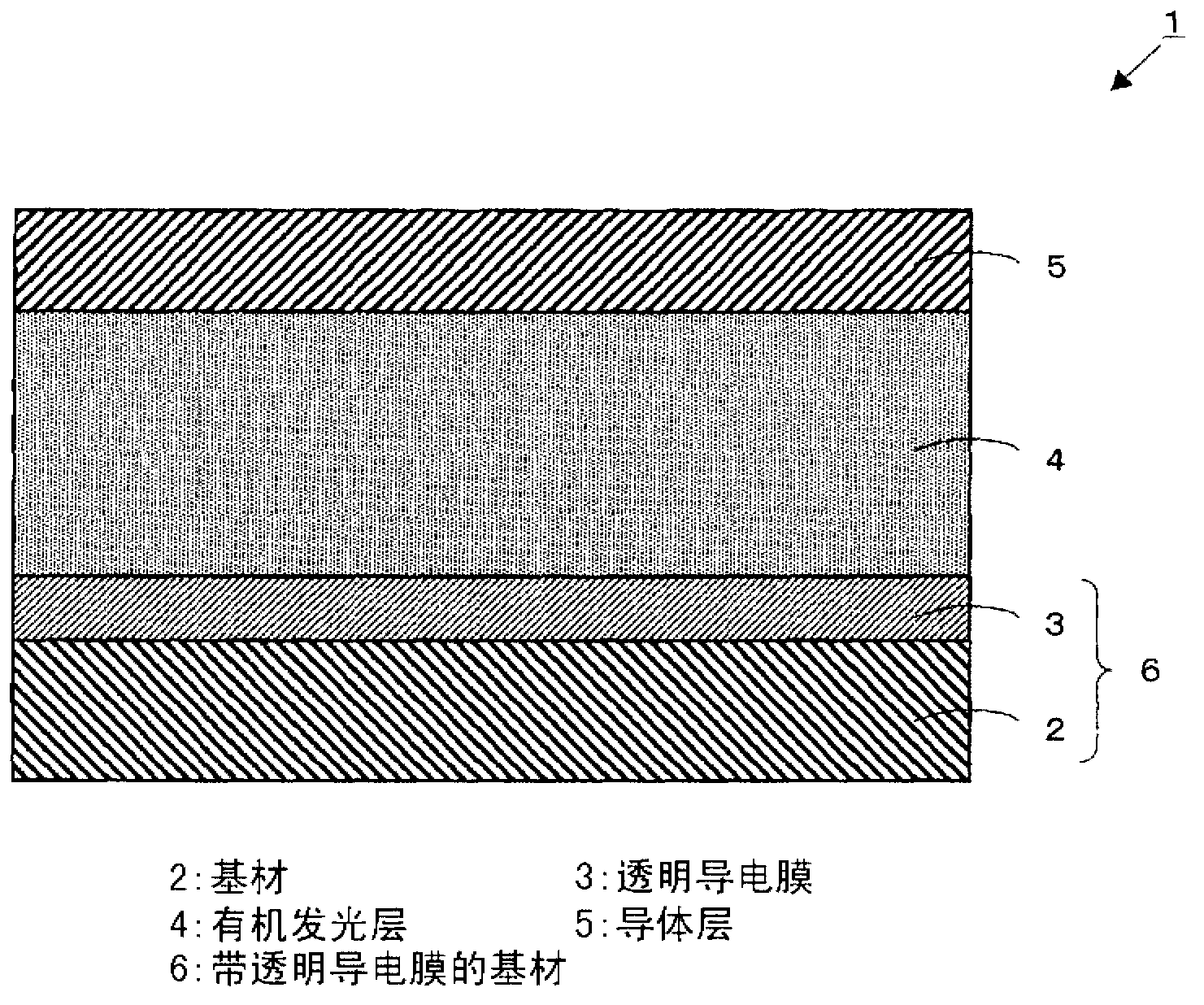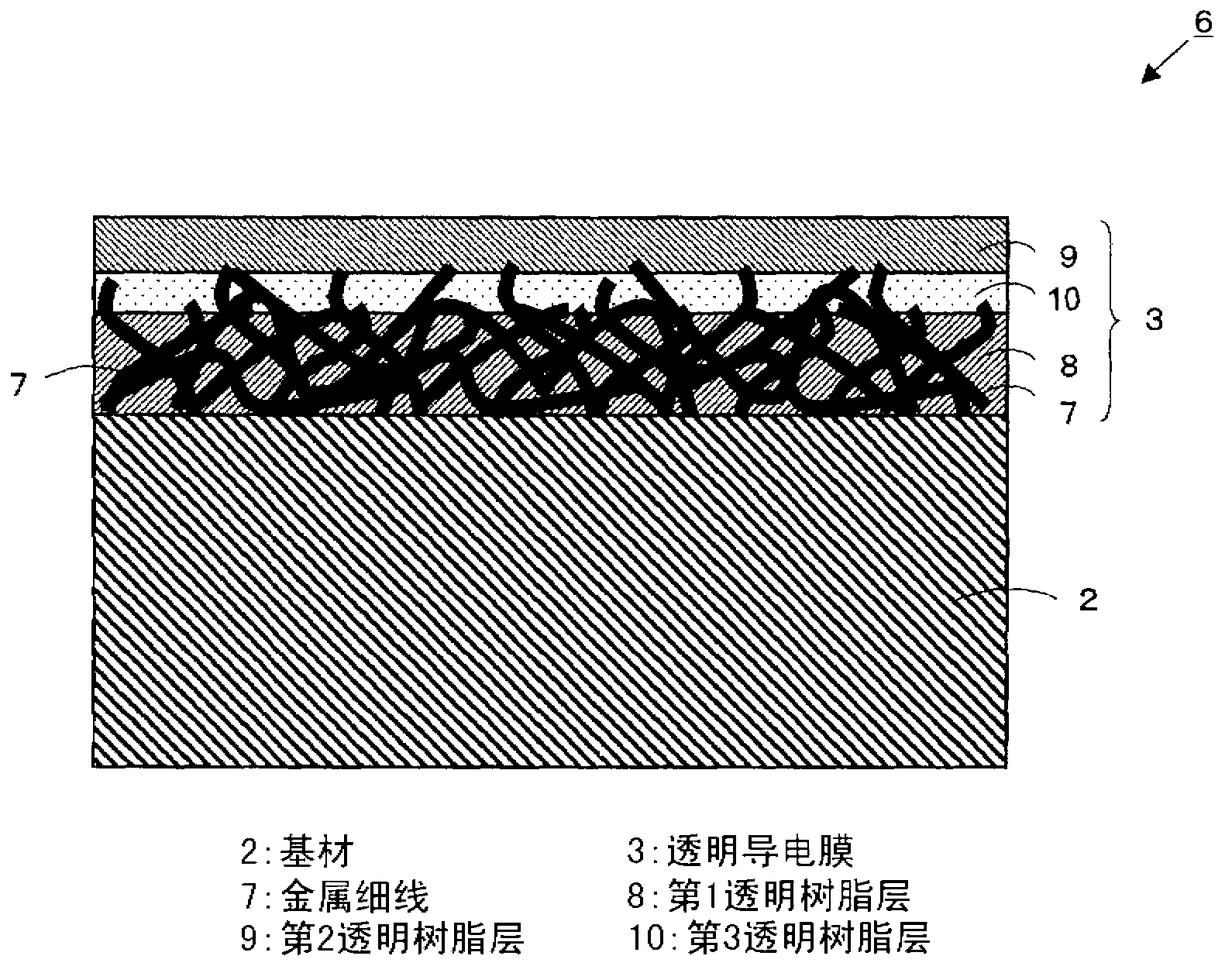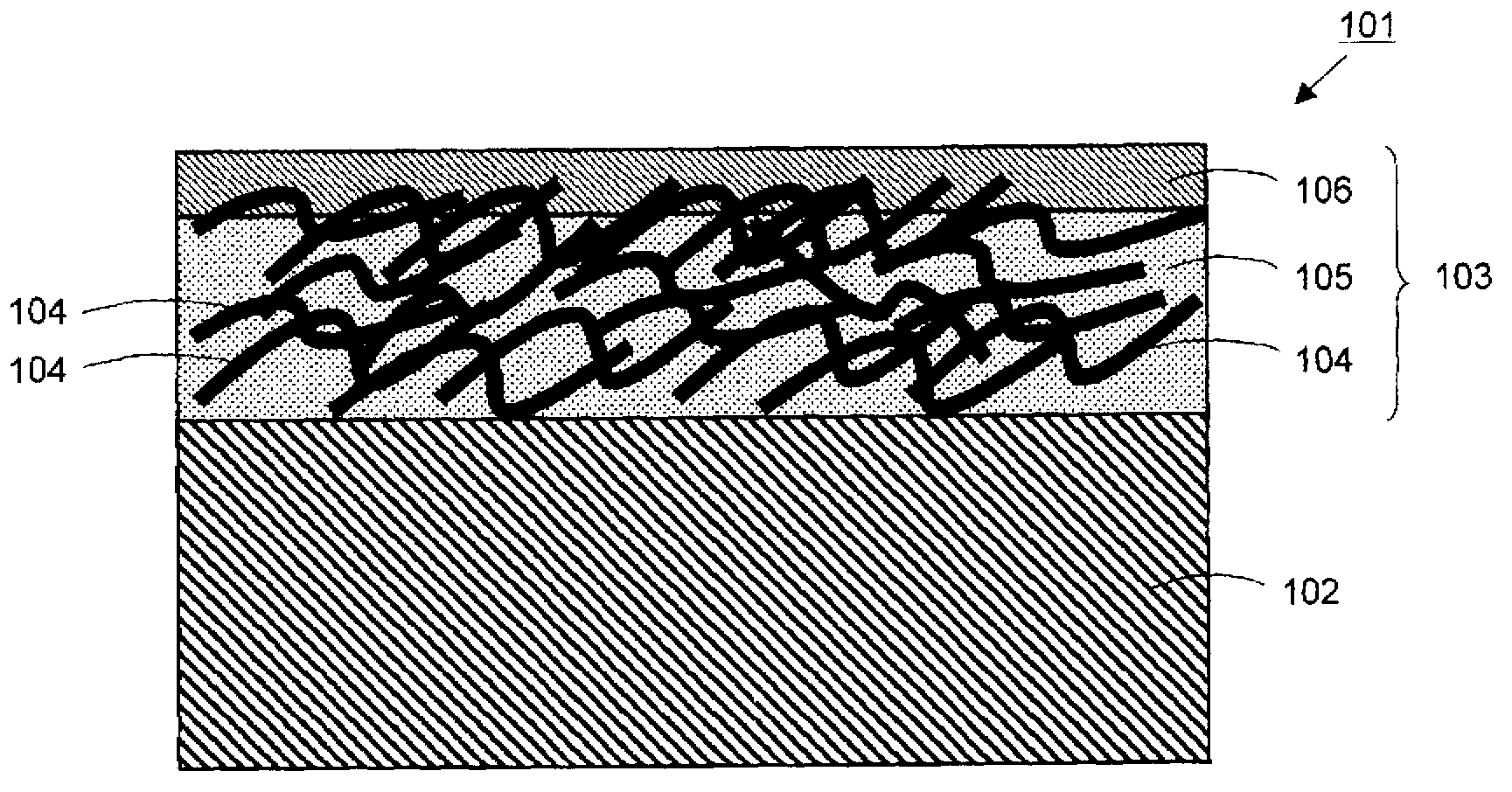Transparent conductive film, substrate with transparent conductive film, and organic electroluminescence element using same
一种透明导电膜、基材的技术,应用在电致发光光源、分散在不导电无机材料中的导电材料、导电材料等方向,能够解决损伤、无法透明导电膜103的表面导电性不均匀、导电性降低等问题
- Summary
- Abstract
- Description
- Claims
- Application Information
AI Technical Summary
Problems solved by technology
Method used
Image
Examples
Embodiment 1)
[0069] As a substrate, non-alkali glass No. 1737 (refractive index of light with a wavelength of 500 nm: 1.50 to 1.53) manufactured by Corning Corporation was prepared. Next, on this base material, the material of the first transparent resin layer containing thin metal wires prepared in advance was applied to a thickness of 100 nm by the spin coating method, and heated at 100° C. for 5 minutes. Thus, the first transparent resin layer is formed on the base material. Next, the material for the first porous layer was applied on the first transparent resin layer so as to have a thickness of 30 nm, and heated at 100° C. for 5 minutes. Thus, a porous layer having a contact angle with water of 30 degrees was formed on the first transparent resin layer. Next, the material for the second transparent resin layer was applied on the porous layer so as to have a thickness of 100 nm, and heated at 100° C. for 5 minutes. Thus, the second transparent resin layer was formed on the porous lay...
Embodiment 2)
[0071] Instead of using the material for the first porous layer, the material for the second porous layer was used to form a second porous layer with a pore diameter of 10 nm and a contact angle with water of 60 degrees, except that it was produced and implemented in the same manner as in Example 1 above. Sample from Example 2.
Embodiment 3)
[0073] A sample of Example 3 was produced in the same manner as in Example 1 above except that the material for the first porous layer was coated on the substrate so as to have a thickness of 300 nm.
PUM
| Property | Measurement | Unit |
|---|---|---|
| aperture size | aaaaa | aaaaa |
| water contact angle | aaaaa | aaaaa |
| coating thickness | aaaaa | aaaaa |
Abstract
Description
Claims
Application Information
 Login to View More
Login to View More - R&D
- Intellectual Property
- Life Sciences
- Materials
- Tech Scout
- Unparalleled Data Quality
- Higher Quality Content
- 60% Fewer Hallucinations
Browse by: Latest US Patents, China's latest patents, Technical Efficacy Thesaurus, Application Domain, Technology Topic, Popular Technical Reports.
© 2025 PatSnap. All rights reserved.Legal|Privacy policy|Modern Slavery Act Transparency Statement|Sitemap|About US| Contact US: help@patsnap.com



